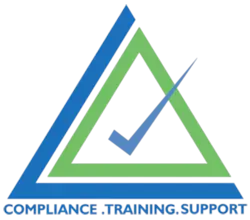As we’re sure you’ll be aware, diesel emissions are very much in the limelight at the moment.
The DVSA recently issued Special Notice 02-24, issued 2 April 2024, which covers diesel emission check changes – how MOT testers carry out their emissions checks.
The DVSA Special Notice covering Diesel Emission Check Changes states:
“Some diesel vehicles are now being presented for MOT testing with low plate values, some are as low as 0.01.
You must add 0.05 to the plate value when entering on the smoke tester to prevent incorrect failures due to manufacturing tolerances.
For example:
- a vehicle presented with a plate value of 0.01 enter as 0.06
- a vehicle presented with a plate value of 0.1 enter as 0.15
- a vehicle presented with a plate value of 0.5 enter as 0.55”
A further clarification notice has also been issued:
“We have received a number of queries when to apply the addition of 0.05.
The instruction applies to all vehicles which are tested to the plate value regardless of what value is displayed.
You must add 0.05 to the plate value into the smoke tester when prompted as the examples in the SN.
The addition of 0.05 becomes the limit for pass or fail.
The addition of 0.05 does not apply to vehicles tested to default values where there is not a manufacturers specified limit attached to the vehicle.”
Have you implemented the changes?
At The MOT Group, we’ve conducted several site visits and talked to many MOT testers in the 2 months since the DVSA Special Notice was issued, and it’s clear that many MOT testing garages haven’t taken the information fully on board.
It’s important that the instructions given by the DVSA via Special Notices aren’t ignored or forgotten about. Newly issued information is likely to be in the forefront of a DVSA inspector’s mind – so it’s something they’ll be actively looking for at their site review visits.
MOT Testing Site Managers need to show that they have done everything they can to implement the DVSA’s Special Notice.
Here’s what you should do to show that you’ve taken the relevant action:
- Print the DVSA Special Notice and ask all MOT testers to sign that they have read and more importantly, understood the content.
- Discuss the DVSA Special Notice with the MOT Testing team and talk about how they are going to implement it in their MOT testing.
- Carry a random check on some emission reports from MOT tests:
– choose 4 or 5 from the MOT Test Log report
– find the matching emission report
– check that the test has been properly conducted – looking for oil temperatures recorded, and the diesel plate value has been used.
– Finally, check that 0.05 has been added. We’d suggest going as far as asking that the addition is written out, just for a few months until it becomes a habit (on average, it takes around 66 days for something to become a habit).
Whilst we’re talking about emissions, the following information can be found in the MOT Manual, Section 8.2.2.2:
Maximum engine revs cannot be achieved on some vehicles due to design features. If this is the case, the vehicle must be tested as presented. Such vehicles, as well as some with low emission diesel engines (mainly Euro IV and onwards) may fail to trigger a reading on the DSM.
If you cannot get a reading or the DSM shows an error, you must make a manual record to show that the emissions limits were tested and met but the DSM could not register the reading.
If you cannot register the results in the meter, write down the following details and keep them for 3 months:
- test station number
- tester’s name
- date and time
- test number
- vehicle type
- vehicle registration number
- that the vehicle passed the emissions test
- no record was produced due to low emissions
It’s very important to keep these records for the specified period as the DVSA can ask you about them during a site visit. Are you confident that you could provide them on request?
Don’t let missing out a few simple checks get you into trouble with the DVSA!

